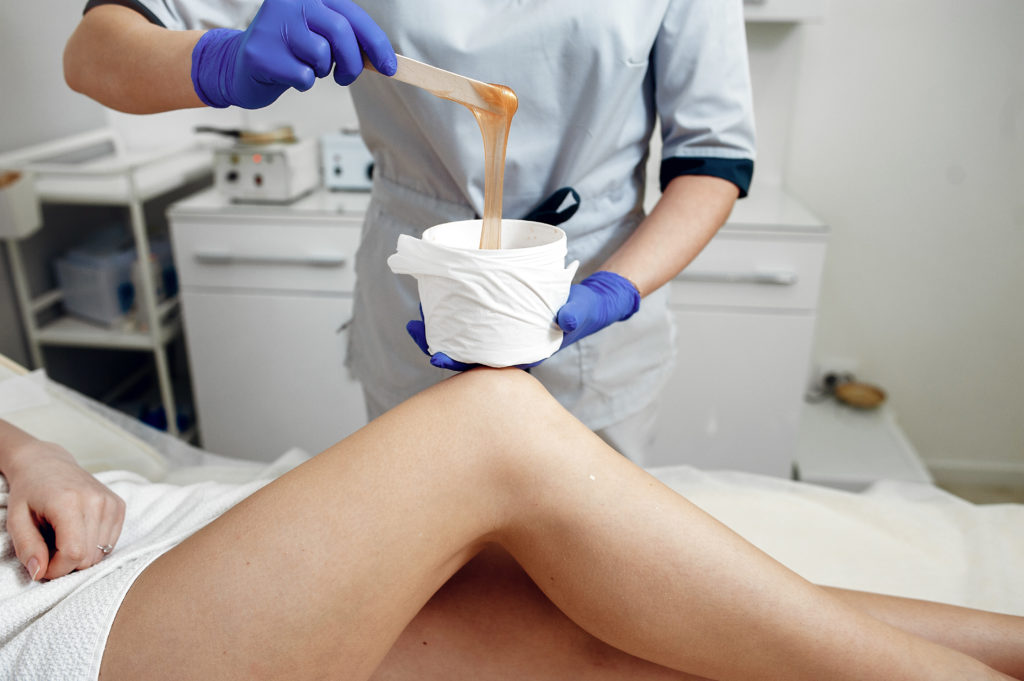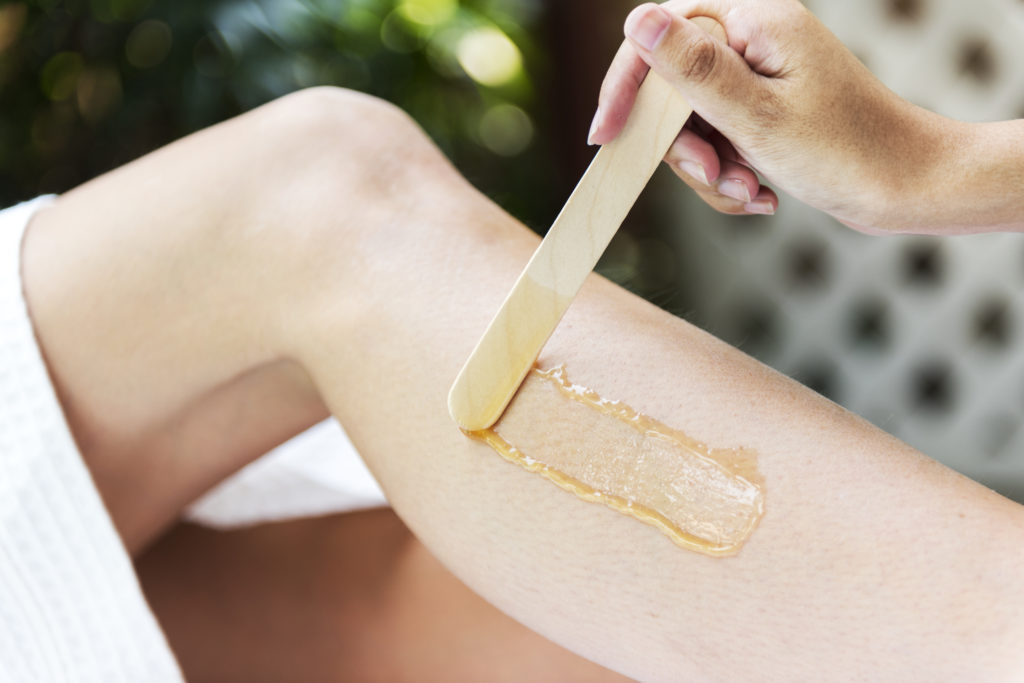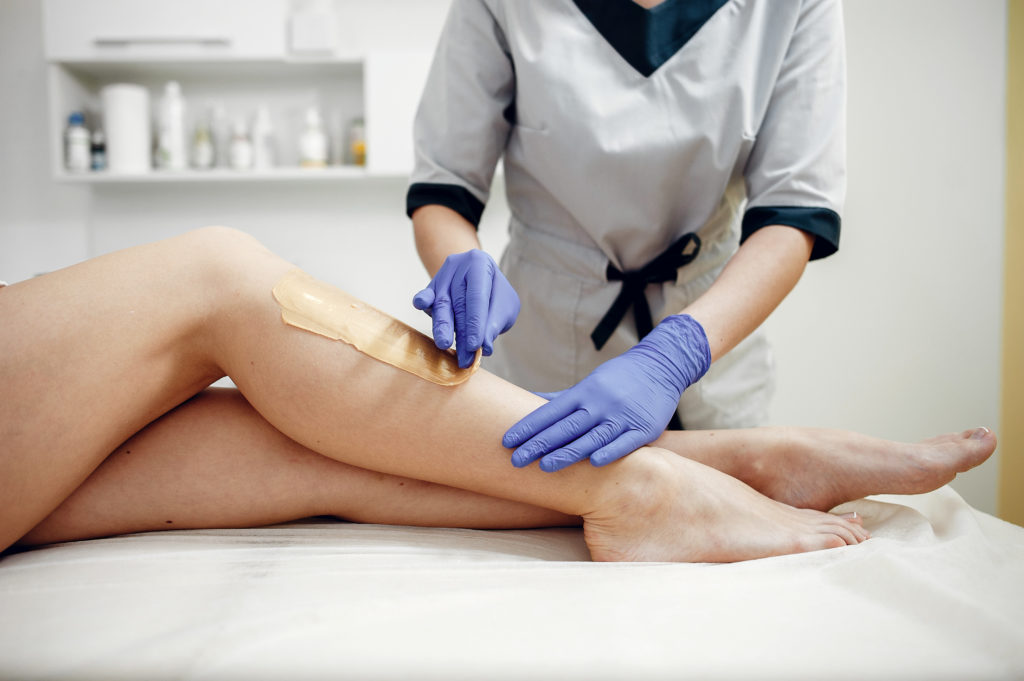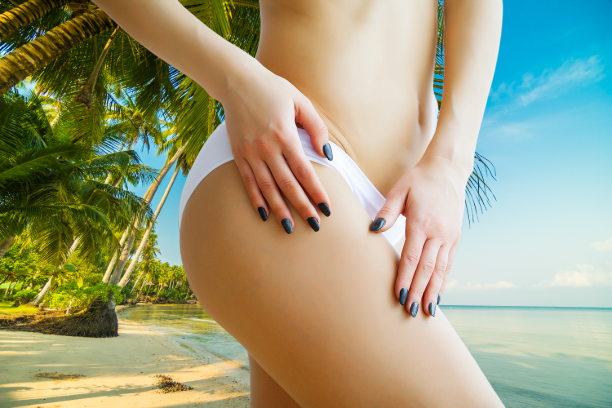Body Waxing
Body Waxing
Waxing is a very popular way of removing unwanted hair, for up to six weeks, depending on the area being treated, the type of hair, and the rate of growth. Although not permanent waxing can encourage a reduction of hair growth. Almost any part of the body can be waxed. Including eyebrows, face, pubic hair (called bikini waxing), legs, arms, back, abdomen, knuckles, and feet. There are many types of waxing processes that are suitable for removing unwanted hair. But there are mainly two methods that are most popular.
Soft Wax using strips
This method involves applying warm wax over the skin. Then cloth or paper is applied and pressed firmly. This will enable sticking the strips to the wax and then wax to the skin. The strip is then quickly ripped against the direction of hair growth, as parallel as possible to the skin to avoid trauma to the skin. This method removes the wax along with the hair.
There are different forms of strip waxing or soft waxing
Heated, cold, or pre-made strips. Unlike cold waxing, heated wax is spread easily over the skin. Because cold waxing is thicker, which makes it more difficult to spread smoothly over the skin. Pre-made strips come with the wax on them, and they come in different sizes for different area uses.
Hard wax without strips
This method does not require strips. After applying the warm wax to the skin, the wax then hardens when it cools, thus allowing easy removal without the aid of cloths or strips. So this waxing method is very beneficial to people who have sensitive skin. Stripless wax does not adhere to the skin as much as strip wax does, thus making it a good option for sensitive skin. Finer hairs are easy to remove because the hard wax encapsulates the hair as it hardens. The strapless waxing method can also be less painful.
Preparation of Wax
Ensure that wax is not so hot so that it could burn the skin or too hard for application. You never want the wax so cold that it hinders its application. The temperature should be around 60-70C. Most regular wax warmers have high, medium & low settings so choose halfway between high and medium. This is the commonly used temperature, which results in the perfect way for application. Make sure you read the instruction manual properly to understand the usage of the device.
Never use a wax warmer until you completely understand its proper use. Consider practicing heating several times so you can understand how the equipment works.

Pre- waxing
Prior to the waxing procedure, make sure you sanitize your hands & also clean the skin and remove any makeup, dead skin cells & body oil. When you are ready to start the procedure, always be cautious and test the wax first on your wrist. You should try the wax several times to find the right consistency that is easy to apply.
Have a plan before the waxing process begins. Consider the part of the body you will be waxing and determine the techniques to approach it.
For very long hair, trim it down. Because the length of the hair must be approximately ¼ to ½ inch long.
Learn to level the applicator, this way wax won’t spill or drip. We recommend you to use our Protective Heater Collars, to avoid any wax dripping falling on to your wax heater, saving cleaning time.
Common pain killers taken an hour before waxing can reduce pain and inflammation.
Waxing
Wax is applied along the direction of hair growth. So it must be even, smooth and thin.

When you apply soft wax, leave the strip about one or two inches, above the wax to hold on to. Remove the wax strip in the opposite direction to the way the hair grows. As you pull, ensure your hand is parallel to the skin. Avoid pulling upwards.

Top Tip – Swiftly make light taps on the waxed area, this will confuse the skin senses.
Post- Waxing
Ensure that there is no residue left on the waxed area. If you find any residue left, use Vaxy After wax Oil or After Wax wipes to remove it. Do not use water to scrub it as wax is a product of oil, and it does not mix with water.
Do’s and Don’ts of Waxing
Do not touch the area that has just been waxed without washing your hands, Ensure hands are washed thoroughly with antibacterial soap so that it reduces the chance of infection.
Do not have a hot shower, hot sauna or hot bath just after waxing, as this can irritate the waxed area.
Do not use tight clothing after waxing, as this might rub or scratch the skin. Wear loose clothes for two days after waxing.
After waxing do not expose the waxed area to sunbeds and harsh sun rays.
Avoid vigorous exercise for one day, because excessive sweating may irritate the waxed area.
Applying make -up, using loofah or exfoliation or exfoliating products, can cause pain and discomfort, after waxing.
After bikini waxing, if the area is rubbed, you may feel discomfort, soreness or irritation.
After waxing you need to avoid Deodorants, perfumes, lotions & sprays for a few days, because they may cause irritation.
Using Vaxy after wax oil, and Vaxy after wax wipes will smooth the skin and reduce or eliminate irritation after waxing.

